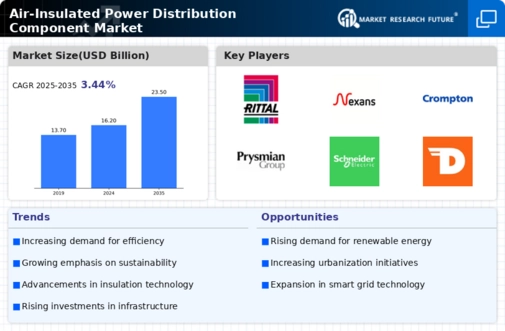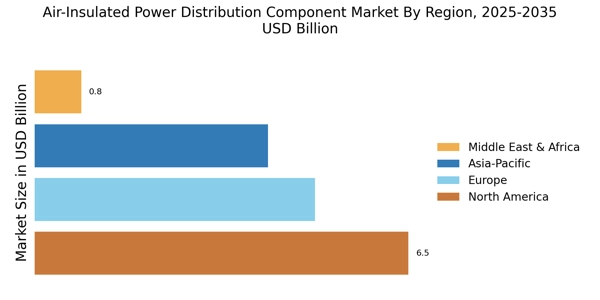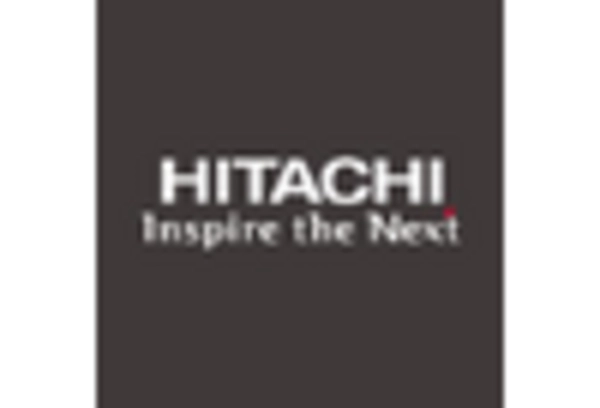Growing Focus on Energy Efficiency
The increasing focus on energy efficiency is a driving force in the Air-Insulated Power Distribution Component Market. As energy costs rise and environmental concerns mount, both consumers and businesses are seeking solutions that minimize energy waste. Air-insulated components are recognized for their high efficiency and lower losses compared to traditional systems. In 2025, the market is projected to witness a 10% increase in demand for energy-efficient air-insulated switchgear, as organizations aim to reduce operational costs and enhance sustainability. This trend not only supports regulatory compliance but also aligns with the broader shift towards greener energy practices.
Rising Demand for Renewable Energy
The increasing emphasis on renewable energy sources is a pivotal driver for the Air-Insulated Power Distribution Component Market. As nations strive to reduce carbon emissions, the integration of renewable energy into existing grids necessitates robust power distribution systems. Air-insulated components, known for their reliability and efficiency, are becoming essential in managing the fluctuating supply from renewable sources. In 2025, the demand for air-insulated switchgear is projected to rise by approximately 15%, reflecting the industry's adaptation to cleaner energy solutions. This shift not only enhances grid stability but also aligns with global sustainability goals, thereby propelling the market forward.
Government Initiatives and Investments
Government policies and investments play a crucial role in shaping the Air-Insulated Power Distribution Component Market. Many governments are implementing initiatives aimed at modernizing electrical infrastructure to support economic growth and energy efficiency. In 2025, it is anticipated that public sector investments in power distribution will exceed $100 billion, with a significant portion allocated to air-insulated technologies. These initiatives often include incentives for adopting advanced power distribution solutions, thereby stimulating market demand. As governments prioritize energy security and sustainability, the air-insulated power distribution sector stands to benefit substantially from these strategic investments.
Urbanization and Infrastructure Development
Rapid urbanization is significantly influencing the Air-Insulated Power Distribution Component Market. As urban areas expand, the need for reliable and efficient power distribution systems becomes increasingly critical. The construction of new residential and commercial buildings necessitates the installation of advanced power distribution components. In 2025, it is estimated that urban areas will account for over 70% of global energy consumption, thereby driving the demand for air-insulated solutions. These components are favored for their space-saving designs and lower maintenance requirements, making them ideal for densely populated regions. Consequently, urbanization acts as a catalyst for market growth.
Technological Innovations in Power Distribution
Technological advancements are reshaping the Air-Insulated Power Distribution Component Market. Innovations such as smart grid technologies and automation are enhancing the efficiency and reliability of power distribution systems. The integration of digital monitoring and control systems allows for real-time data analysis, improving operational performance. In 2025, the market for smart air-insulated switchgear is expected to grow by 20%, driven by the need for enhanced grid management. These innovations not only optimize energy distribution but also reduce operational costs, making air-insulated components increasingly attractive to utility providers and industrial users alike.


















Leave a Comment